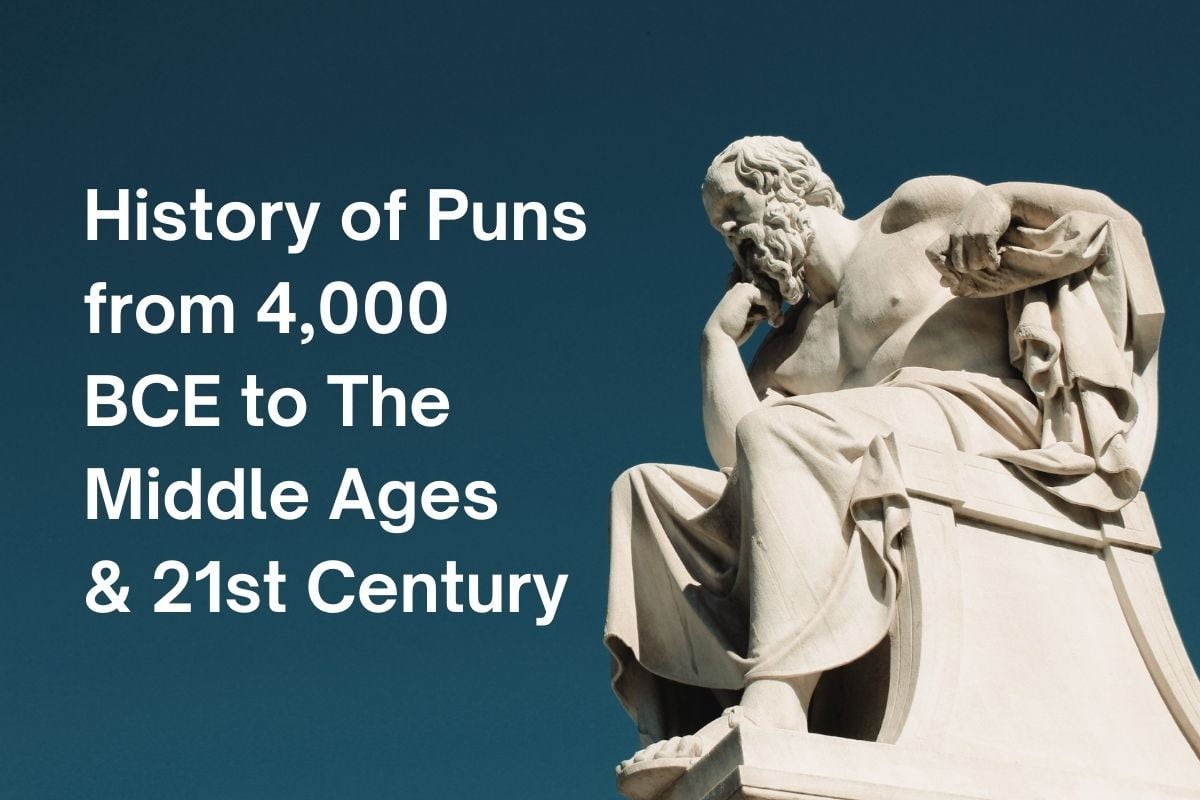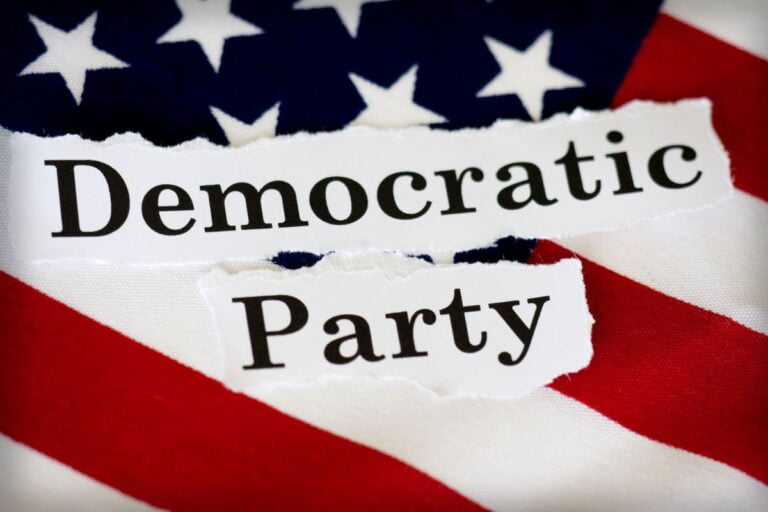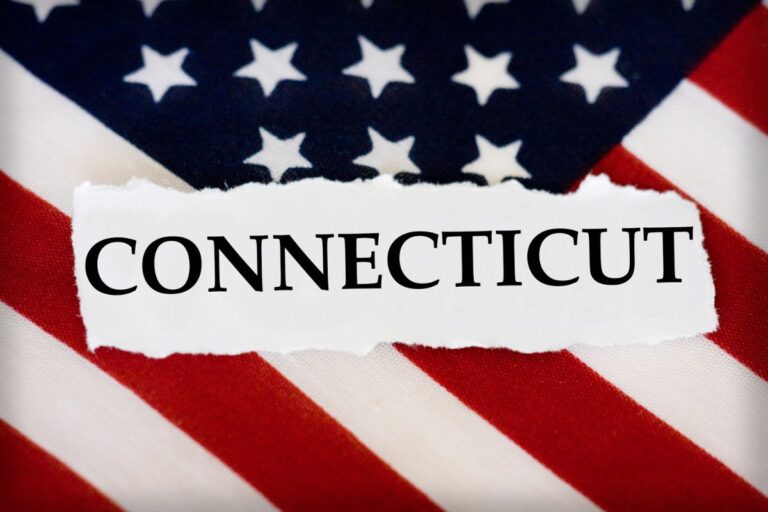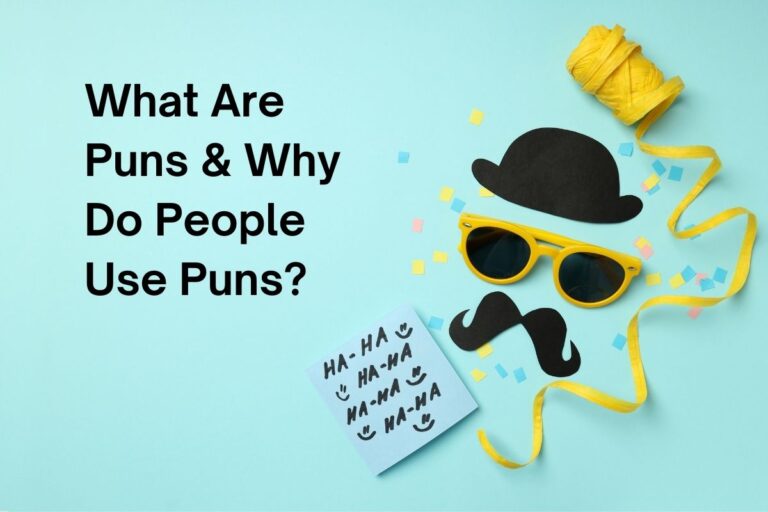History of Puns from 4,000 BCE to The Middle Ages & 21st Century

Puns might seem like simple, silly wordplay, but they’ve got a long, rich history that stretches back thousands of years.
They’re not just the realm of dad jokes and cheesy comedians; puns have been used in everything from ancient hieroglyphics to modern-day memes.
So, buckle up for a pun-tastic journey through time as we discover the history of puns and their centuries old impact on language and culture.
I. Ancient Origins: Puns in Early Civilizations
Sumerian Wordplay: Puns in Cuneiform
Let’s kick things off with the Sumerians, who lived in what is now southern Iraq around 4,000 BCE. These early pioneers of civilization were no strangers to wordplay.
In fact, some of the earliest examples of puns can be found in their cuneiform writings. Sumerian scribes often played with the sounds and meanings of words, crafting puns that were both clever and complex.
These puns appeared in various contexts, from administrative records to myths and epics, showcasing the Sumerians’ appreciation for linguistic creativity.
Ancient Egyptian Humor: Puns in Hieroglyphics
Moving on to ancient Egypt, hieroglyphics were not just a means of communication but also a canvas for humor and wordplay. Egyptian scribes cleverly used the dual meanings of symbols to create puns.
For instance, the hieroglyph for “duck” could also mean “son,” allowing for playful interpretations in an animal pun context.
These puns appeared in religious texts, tomb inscriptions, and everyday writing, reflecting the Egyptians’ fondness for clever wordplay and their belief in the power of language.
The Greeks and Romans: Puns in Classical Literature
The Greeks and Romans also had a flair for puns. Greek playwrights like Aristophanes used puns extensively in their comedies to entertain and provoke thought.
In Roman literature, puns were a staple in the works of authors like Plautus and Ovid. These classical writers used puns to add layers of meaning to their texts, making their stories more engaging and memorable.
Cicero, the famous Roman orator, was known for his punning in speeches, demonstrating how wordplay could be a powerful rhetorical tool.
Biblical Puns: Wordplay in Sacred Texts
Puns even made their way into sacred texts. The Bible, for instance, contains numerous examples of wordplay. Hebrew, the original language of much of the Old Testament, is particularly rich in puns due to its structure and vocabulary.
These puns often carried significant theological or moral messages, adding depth to the scriptures.
For example, the name “Isaac” means “he laughs,” which ties into the story of Sarah laughing upon learning she would bear a son in her old age.
Check Out: What Are Puns & Why Do People Use Puns? (With Examples)
II. The Middle Ages and Renaissance: Puns Flourish in Literature and Art
Shakespearean Puns: The Bard’s Love of Wordplay
Fast forward to the Middle Ages and Renaissance, where puns truly flourished in literature and art. William Shakespeare, the Bard himself, was a master of the pun.
His plays are replete with clever wordplay, from the witty banter of “Much Ado About Nothing” to the darkly comedic puns in “Hamlet.”
Shakespeare’s puns added humor, depth, and double meanings to his dialogue, making his works rich in linguistic texture and endlessly quotable.
Puns in Medieval Literature: Chaucer and Beyond
Before Shakespeare, Geoffrey Chaucer was weaving puns into his tales. In “The Canterbury Tales,” Chaucer’s characters often use puns to humorous and revealing effect.
For example, in “The Miller’s Tale,” wordplay adds layers of meaning and bawdy humor to the story. Puns in medieval literature weren’t just for laughs—they often provided insight into characters and themes, showcasing the writers’ linguistic dexterity.
Renaissance Wit: Puns in Art and Music
The Renaissance was a time of great creativity and innovation, and puns were not limited to literature.
Visual artists and musicians also embraced wordplay. Painters like Leonardo da Vinci and Michelangelo incorporated puns into their works, using visual elements to create double meanings.
In music, composers like Thomas Weelkes used text painting, a form of musical punning, to match the lyrics’ meanings with musical motifs, adding another layer of engagement for listeners.
III. The Enlightenment and Beyond: Puns in Everyday Life
Puns in Political Discourse: A Tool for Satire and Persuasion
During the Enlightenment, puns found a new home in political discourse. Writers and orators used puns to critique and satirize the government, society, and even each other.
Political pamphlets, speeches, and cartoons of the era are filled with clever wordplay designed to entertain and persuade. Puns allowed political commentators to make pointed critiques while also engaging their audience with humor and wit.
Puns in Advertising: Catchy Slogans and Brand Names
The rise of advertising in the 19th and 20th centuries saw puns becoming a staple in marketing. Catchy slogans and brand names often relied on puns to stick in consumers’ minds.
Consider the classic “Let your fingers do the walking” slogan for the Yellow Pages, which cleverly uses a double meaning to promote its directory.
Puns in advertising are memorable and effective, making them a favorite tool for marketers looking to create a lasting impression.
Check Out: 160 Puns About Puns That Are Pun of a Kind
The Rise of Dad Jokes: Puns in Popular Culture
Puns have always been part of popular culture, but the rise of the “dad joke” brought them to a new level of ubiquity.
Dad jokes are simple, often groan-worthy puns that are endearing in their straightforwardness. They’ve become a cultural phenomenon, celebrated for their cheesiness and the eye-rolls they provoke.
Despite—or perhaps because of—their simplicity, dad jokes highlight the universal appeal of puns and their ability to bring people together through shared humor.
IV. Modern Puns: The Internet Age and Beyond
Puns in Memes and Social Media: A New Era of Wordplay
The advent of the internet and social media has given puns a new platform. Memes, tweets, and posts frequently use puns to catch attention and go viral.
Social media users love the quick, punchy nature of puns, which fit perfectly into the fast-paced world of online communication.
From pun-filled hashtags to viral videos, the internet has become a playground for pun enthusiasts, spreading wordplay to a global audience in seconds.
Pun Competitions and Festivals: Celebrating the Art of the Pun
Pun competitions and festivals have sprung up around the world, celebrating the art of the pun.
Events like the O. Henry Pun-Off in Austin, Texas, bring together punsters to compete in crafting the best puns.
These gatherings highlight the creativity and skill involved in punning, turning what many see as simple wordplay into a celebrated and competitive art form.
Check Out: How to Make Puns in 5 Simple Steps (With Practical Examples)
The Future of Puns: AI and the Evolution of Wordplay
Looking ahead, artificial intelligence (AI) is beginning to explore the world of puns. AI algorithms can generate puns, contributing to everything from chatbots to automated content creation.
While AI puns may lack the human touch, they represent an exciting evolution in wordplay. As technology advances, puns will likely continue to evolve, finding new forms and platforms for expression.
V. Conclusion: The Enduring Appeal of Puns
Puns have journeyed through time, adapting and thriving in various cultures and contexts.
From ancient civilizations to the digital age, they’ve proven their versatility and enduring appeal. Whether used for humor, satire, or creative expression, puns connect us through shared language and laughter.
So next time you encounter a pun, take a moment to appreciate its history and the cleverness behind it.
After all, puns are more than just silly wordplay—they’re a testament to our love of language and our endless creativity.






